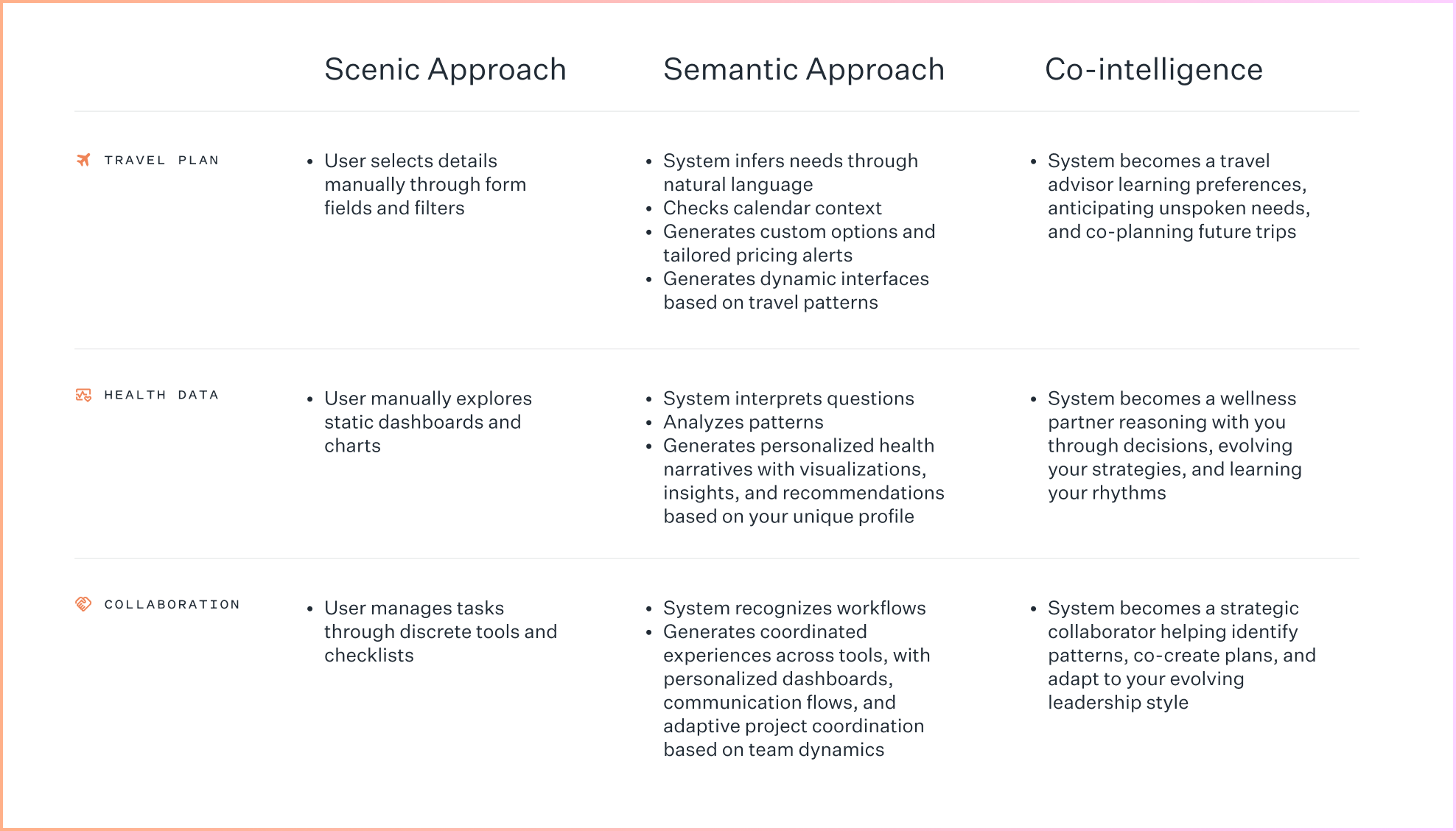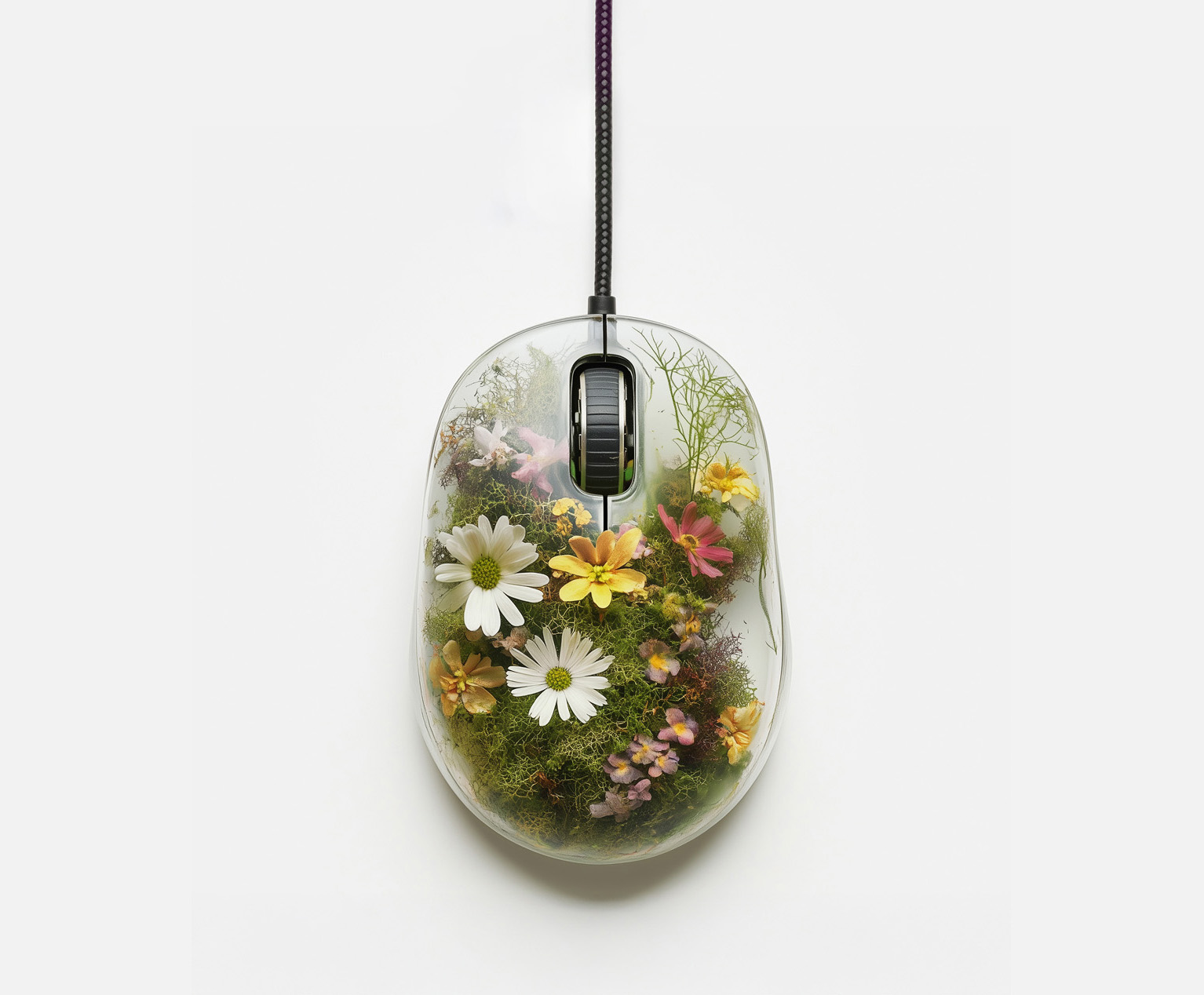
Insights
Part III: Beyond the interface
A framework for collaborative intelligence
By
Doug Cook
—
20
Jun
2025
We’re entering a new age. Designers are moving beyond crafting experiences to architecting collaborative intelligence. It’s the most significant change in our discipline since the transition from print to digital.
Interface design → crafting interactions
Experience design → crafting journeys
Intelligence design → crafting partnerships
The architecture of change
This evolution marks a fundamental shift from human-computer interaction to human computing, a new paradigm for how people and machines relate. At its foundation is human wellbeing, ensuring that intelligence remains in service to humanity.

Within this new paradigm, semantic design plays a pivotal role: it bridges human intent with machine intelligence, enabling true collaboration. But to realize its full potential, we’ll need to navigate the messy transition from our current tools to tomorrow’s co-intelligent systems.
From scenic to semantic
Today’s interfaces still operate like guided tours: scenic and pre-scripted. We follow signs, press buttons, and hope the system maps cleanly to our goals.

Semantic design flips that model. Instead of designing detailed maps, we’re building intelligent compasses: systems that adapt to intent, interpret goals, and generate personalized paths.
This progression transforms how we think about interaction, agency, and representation.

The shift from traditional interfaces to collaborative intelligence is happening across three key dimensions:
From commands to context
We’re moving from explicit commands to implicit interactions. Systems understand context and infer intent from natural language and behavior. Experiences become more personalized and adaptive.

From fixed to fluid
We’re moving from fixed paths to adaptive journeys. Systems deliver dynamic, contextual experiences based on individual patterns and needs. Interfaces become less prescriptive and more intelligent.

From tools to partnerships
We’re moving from reactive tools to collaborative partners. Systems learn from behavior and evolve alongside users, providing increasingly aligned experiences. Technology shifts from executing to co-creating.

Designing for human computing
As semantic interfaces mature, we’ll need new design approaches to navigate this complexity:
Relationship design
Design systems that function as thinking companions rather than tools. This means creating transparency in AI reasoning, maintaining human agency, and ensuring interactions feel authentic and collaborative rather than automated.
Transparent reasoning
When systems understand context and learn from behavior, trust becomes paramount. Make AI reasoning visible and negotiable. The challenge: maintaining human control while leveraging machine intelligence.
Adaptive intelligence
Unlike scenic interfaces with clear affordances, semantic systems must handle uncertainty, multiple interpretations, and evolving intent. Design for graceful misunderstanding and seamless course correction.
Contextual continuity
Relationships span touchpoints, time, and environments. A single partnership may unfold across devices, sessions, and contexts. Design for continuity and coherence across a distributed experience.
Evolving capability
Unlike static interfaces, intelligent systems learn and adapt. Design systems that grow more capable, aligned, and collaborative over time.
Practical applications
These concepts become clearer when we apply them. Here are three examples showing how the same design challenge evolves:

The path forward
The transition from scenic to semantic design is already underway. Human computing represents the next phase of this evolution.
For designers, this means expanding our role from crafters of interfaces to shapers of intelligent systems. Beyond designing what people see, we’re influencing how systems interpret and respond: shaping training data, defining context, and establishing principles that align system behavior with human values.
The future of design is creating co-intelligence between humans and machines. The designers who shape these partnerships today will define how humanity thinks tomorrow.
Start here
Look at your current systems through this lens:
• Is your design still forcing humans to think like machines?
• Does your system learn from use, or just respond to it?
• Are you building partnerships, or just better interfaces?
• Does your design shape who people become, or just what they accomplish?
Continue reading the full series on Human Computing
Part 1: From scenic to semantic (The Foundation)
Part 2: Human computing (The Manifesto)
Let’s shape the future together. Subscribe to our newsletter and join the conversation on LinkedIn!

Doug Cook
Doug is the founder of thirteen23. When he’s not providing strategic creative leadership on our engagements, he can be found practicing the time-honored art of getting out of the way.









































